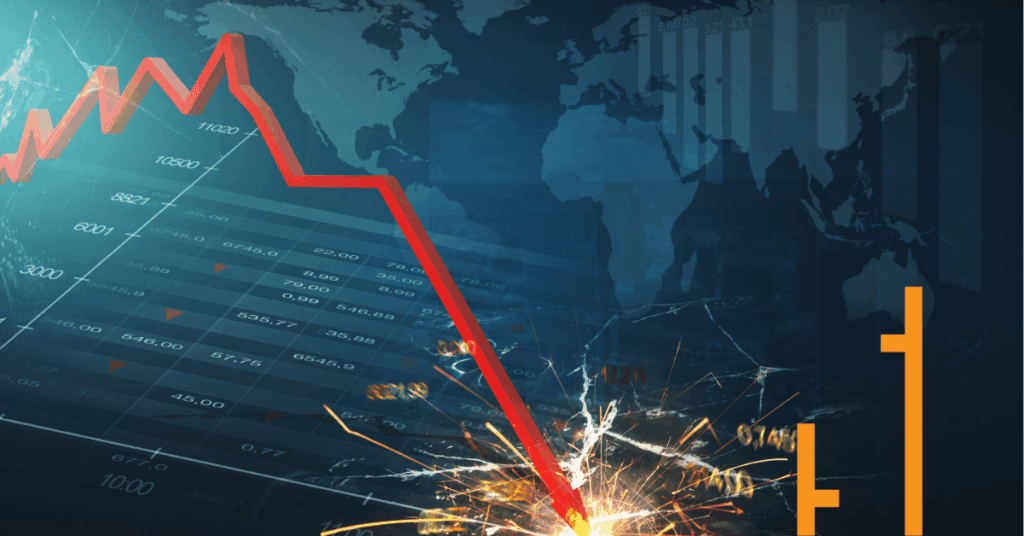
Don’t Wait for the Crash
How to invest while everyone is calling a bubble.
The word ‘bubble’ is everywhere. With major indexes, precious metals, and cryptocurrencies all on a relentless upward run, it’s hard not to buy into the bubble theory, especially as major economic indicators appear to be consistently deteriorating in the background. So, do we pull out of the market now and sit on the sidelines waiting for the bubble to burst? Well, posing the question in this manner is a mischaracterization of the problem at hand, as history clearly shows that investors can still successfully navigate that market before and after a bubble.
History shows that bowing to fear and sitting on the sidelines means missing real gains, but that doesn’t mean recklessly ignoring risk either. To understand how to navigate this, let’s look back.
A Tech Bubble
Today’s AI boom has prompted endless comparisons to the dotcom bubble. And rightly so; it’s a textbook case of what happens when everyone sees a bubble forming but markets keep rising anyway.
From the mid-1990s to the early 2000s, burgeoning tech industry stocks surged as it became evident that the world was truly transitioning into the internet age. The subsequent overvaluation of tech stocks formed the infamous dotcom bubble, with the Nasdaq Composite Index rising 600% between 1995 and 2000, only to collapse completely, returning to 1995 levels by 2002. While the burst of the bubble came as a shock to the investors and venture capitalists who were fully invested in internet technology, warnings had been circulating for some time. As early as December 1996, Federal Reserve chairman Alan Greenspan was already warning about potential overvaluation when he cautioned of ‘irrational exuberance’ unduly escalating asset values. In 1998, the magazine Kiplinger’s Personal Finance had a multi-page spread explicitly naming the ‘Internet bubble’. And yet the bubble continued to grow at an even more rapid pace before popping in March 2000.

However, when analysing the stock market around the dotcom bubble, it is easy to miss the forest for the trees. Yes, the tech sector rose and fell dramatically, but other sectors also continued to rise (albeit at a lesser rate) and suffered smaller falls when the crunch came. The initial bubble burst came in March 2000, and yet 6 out of 10 S&P 500 sectors finished that year with gains. So those investors who were not overexposed to the tech sector would not have been affected by the bubble burst to the same extent as those who invested wholly in it. Someone who sat out from 1996 onwards missed years of growth; those who were diversified rode out the crash with far less damage.

The Present Day
So where are we sitting now? For quite some time now, commentators have been wary of a collapse of AI stocks with increasing openness. Consider NVIDIA; as far back as 2023, analysts have been warning of an AI bubble, with one article titled, “Beware Nvidia Stock’s AI-Induced Bubble Trouble— NVDA stock can only ride higher on AI mania for so long.” At that moment, NVDA was valued at $38.51 (split adjusted); it is now valued at $179.83.
At the beginning of this year, gold was sitting around the $2,650 mark, close to its all-time highs. Most analysts predicted the price would continue to rise steadily but modestly, while others supposed the asset was overvalued and could not sustainably continue to rise any further. According to a survey of 30 prominent analysts by LBMA, they “collectively expect gold to outperform 2024 with an average price of $2,736.69 – 14.7% higher than the average price* for 2024”. This week, gold breached the US$4000/oz mark, shattering the forecasted highs of many reputable analysts.
I don’t mean to say these analysts were wrong or unjustified in their predictions, but if we had divested from these assets or the broader market based on forecasts and headlines rather than immediate market actions, we would have missed out on a huge amount of growth. Downturns and crashes will occur again; market history is littered with slumps of various depths and lengths, but the space between these falls is characterised by growth which eventually exceeds those falls. Fortunately, there are a number of practical methods we can use to navigate these market movements and stay in them while still preparing for downturns.
Diversification
One of the simplest ways to avoid being caught in a bursting bubble is to avoid being overexposed in the first place. Diversification will always be one of the most effective and significant aspects of any strategy for managing investment risk. By spreading capital across multiple stocks, sectors, indexes, asset classes, or strategies, the impact of any single market event, such as a bubble burst, can be greatly mitigated.
Let’s revisit the DotCom crash that occurred in the early 2000s. At the market peak of the year 2000, tech stocks made up at least 65% of the Nasdaq-100 index and roughly 35% of the S&P 500. When the tech bubble burst, the effect of this heavy weighting toward tech stocks was immediately obvious. The Nasdaq-100 index dropped more than 80% from its peak in March 2000 to its lowest point in October 2002. Comparatively, the S&P 500, which includes many tech stocks but also a wider base of sectors, declined 49%. While still a significant fall, it’s a simple example of how overreliance on a single sector can exaggerate losses in a downturn or bubble. Those who suffered the most from the burst of the dotcom bubble were those who invested only in tech. The same logic will hold true today: investors fully committed to AI will experience the brunt of any correction.

However, diversification is not limited to stocks within the same market, as illustrated in the previous example. We can also gain diversification through global markets or alternate assets such as gold, crypto, or bonds. The Chartist’s All-Weather Strategies use ETFs to gain easy access to these diversification methods, providing a layer of safety that cannot be found via pure stock exposure.
Systematic Safeguards
For those investing through systematic strategies. Safety measures should be built into the strategy and tested specifically across significant market events. Testing a strategy only on uptrending markets will provide nice backtest results but will fall over quickly in the real world. Safeguards such as regime filters can be used to navigate broader market downturns, while trailing stops can be used to minimise damage from sudden downturns on an individual stock level. These tools won’t eliminate losses, but they can turn devastating drawdowns into manageable setbacks.
Every systematic strategy within The Chartist’s subscription portfolio is run with some form of regime filter to mitigate sharp downturns.
Managing Expectations
Lastly, controlling your own expectations of profitability and losses can significantly aid in managing downturns. Warren Buffett, who famously refused to invest in early internet companies during the late 90s, is quoted as saying that the outsized returns experienced by tech investors in ’98 and ’99 had dulled them into complacency, and that ‘investors had been hypnotised by the staggering ascent of tech stocks and ignored everything else, including whether the businesses they were investing in were making money.’ Investors had become accustomed to unsustainable returns and, driven by outsized expectations, piled into more tech companies. Those who resisted the allure avoided the worst of the falls. Keeping realistic expectations keeps you from chasing mania or fleeing at the first sign of trouble.
Don’t Sit It Out
Crashes are inevitable. So is growth. If you wait on the sidelines for the perfect moment, you’ll miss the gains that happen in between. But staying invested doesn’t mean playing a game of brinkmanship with the markets, either. By diversifying, employing safeguards, and managing expectations, you can stay invested through uncertainty without gambling recklessly. The market rewards those who participate intelligently, not those who hide.
At The Chartist we encourage diversification across not only markets but strategies. Take a 14 day free trial to see how our various portfolios can help you navigate the next market downturn.

